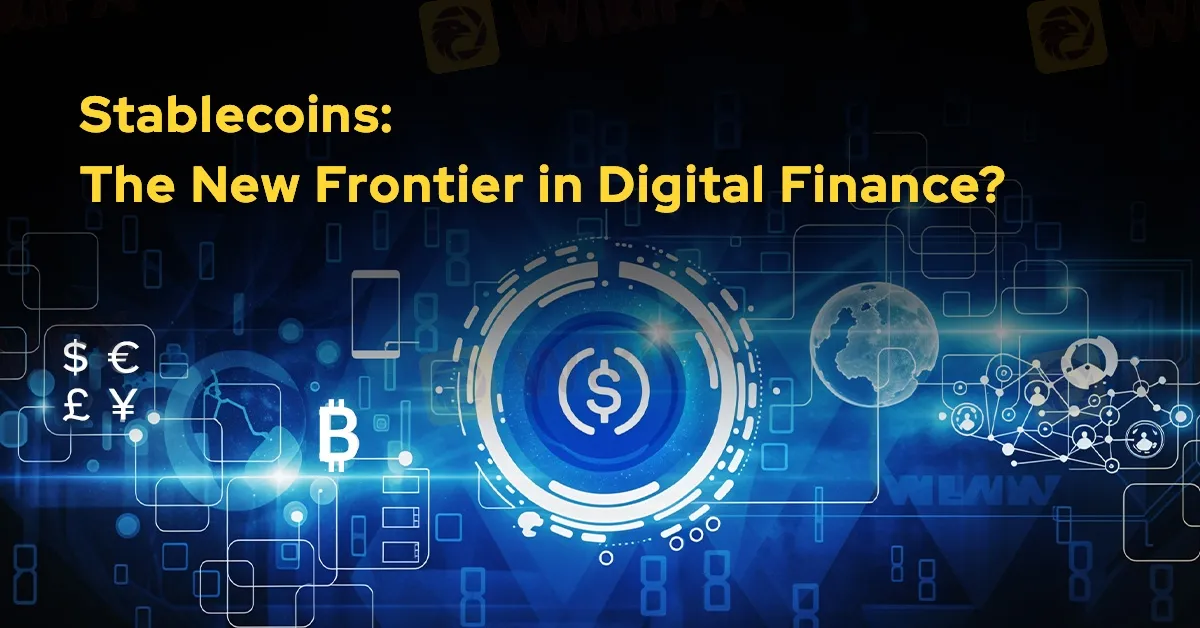简体中文
繁體中文
English
Pусский
日本語
ภาษาไทย
Tiếng Việt
Bahasa Indonesia
Español
हिन्दी
Filippiiniläinen
Français
Deutsch
Português
Türkçe
한국어
العربية
Stablecoins: The New Frontier in Digital Finance?
Abstract:In 2024, while Bitcoin’s surge past US$100,000 captured global attention, financial institutions turned their focus to stablecoins. Will stablecoins be the new frontier in digital finance for the year of 2025?

In 2024, while Bitcoins surge past US$100,000 captured global attention, financial institutions turned their focus to stablecoins — cryptocurrencies designed to maintain a consistent value. Unlike the volatile nature of Bitcoin, stablecoins are typically pegged to traditional currencies, such as the US dollar, and have become a vital part of the digital asset landscape.
Major players in the financial industry, including Visa, PayPal, and Stripe, have been investing in stablecoin projects. The appeal lies not only in their stability but also in the opportunity for issuers to invest backing reserves in short-term US Treasuries, yielding significant returns. Additionally, stablecoins are increasingly being used for everyday transactions, bypassing the volatility of other digital currencies.
Industry observers note that demand for stablecoins has risen sharply among global corporations. Digital asset venture firms have highlighted their growing use in underserved sectors such as global contractor payments, trade finance, and remittances. Stablecoins enable users to receive US dollars quickly and efficiently, avoiding the delays, high costs, and failure rates often associated with traditional banking systems.

The stablecoin market has grown to a valuation of approximately US$205 billion, with Tether‘s USDT leading the sector. However, its dominance is being challenged as regulatory frameworks evolve. The European Union’s Markets in Cryptoassets (MiCA) regulations now require stablecoins on centralised exchanges to be issued by entities holding e-money licences. Tether has yet to meet this criterion, prompting several EU-based exchanges to delist its token. In contrast, Circle, Tethers main competitor, secured the necessary licence in July, positioning itself strongly in the European market.
In the United States, leading companies are launching initiatives to capitalise on the stablecoin boom. Visa unveiled the Visa Tokenized Asset Platform to support banks in issuing stablecoins, while payments firm Stripe acquired a fintech platform specialising in stablecoin transactions. PayPal has already introduced PYUSD, its own stablecoin, developed in collaboration with Paxos. The trend demonstrates a growing recognition of stablecoins as an attractive revenue stream for businesses looking to diversify their services.
Despite their benefits, stablecoins come with risks. The collapse of TerraUSD in 2022, an algorithmic stablecoin, serves as a stark reminder of the potential vulnerabilities in the sector. Terras failure triggered a market-wide sell-off, erasing US$200 billion in cryptocurrency value and leading to the downfall of several digital asset companies.
Regulatory clarity remains a challenge in the United States, where federal frameworks for stablecoins have yet to be established. However, the European Unions MiCA rules offer clear guidance, spurring adoption among Europe-based companies. Experts suggest stablecoins provide a viable alternative to traditional fintech models, which often face stricter banking regulations.

Disclaimer:
The views in this article only represent the author's personal views, and do not constitute investment advice on this platform. This platform does not guarantee the accuracy, completeness and timeliness of the information in the article, and will not be liable for any loss caused by the use of or reliance on the information in the article.
Read more

Vanuatu Passes VASP Act to Regulate Crypto and Digital Assets
Vanuatu's new VASP Act regulates crypto businesses, enforcing strict licensing, AML/CFT compliance, and investor protections.

Blockchain Decentralization: Empowering a Trustless Future
In recent years, blockchain technology has rapidly evolved from a niche innovation behind Bitcoin into a transformative force across industries. At its core, blockchain decentralization refers to the distribution of authority and decision-making away from a central entity and into the hands of a distributed network of participants. This shift redefines how data is stored and verified and paves the way for trustless, transparent, and resilient systems that challenge traditional centralized models.

Why the SEC Rejected the First U.S. Bank-Issued Stablecoin
The SEC rejected the first U.S. bank-issued stablecoin, citing regulatory concerns. This decision highlights the ongoing challenges in crypto asset classification and oversight.

UK Authorities Freeze Nearly $7.7 Million in Illicit Crypto Assets Within a Year
Crypto wallets tied to fraud and tax evasion were frozen under new enforcement powers granted in 2024.
WikiFX Broker
Latest News
Exposing the Top 5 Scam Brokers of March 2025: A Closer Look by WikiFX
Gold Prices Climb Again – Have Investors Seized the Opportunity?
Webull Launches SMSF Investment Platform with Zero Fees
Australian Regulator Warns of Money Laundering and Fraud Risks in Crypto ATMs
The Withdrawal Trap: How Scam Brokers Lure Victims into Paying More
FCA to Investors: Think Twice Before Trusting These Brokers
Trump\s tariffs: How could they affect the UK and your money
Trump gambles it all on global tariffs he\s wanted for decades
HTFX Spreads Joy During Eid Charity Event in Jakarta
How Will the Market React at a Crucial Turning Point?
Currency Calculator







